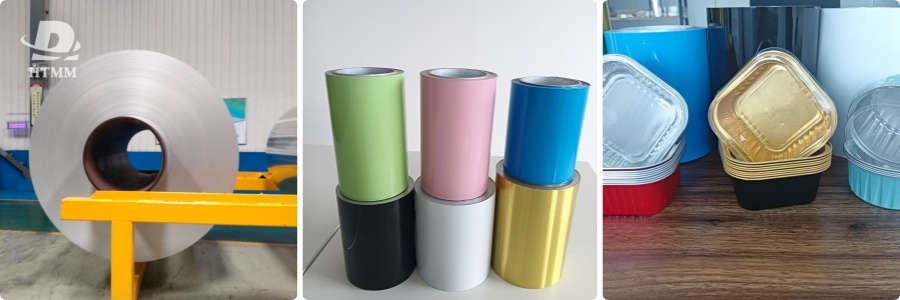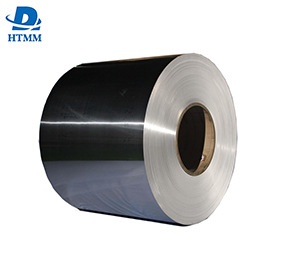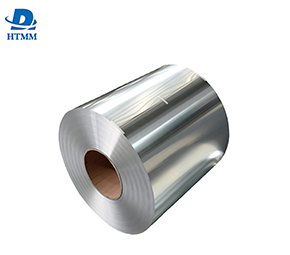Aluminum foil is a versatile material suitable for today's busy lifestyles. As a major manufacturer of 3003 aluminum foil for food container products, we have witnessed firsthand the growing demand for lightweight, durable food containers that can be thrown away after a single use. These foil containers have proliferated, finding their way into ubiquitous uses like takeout, TV dinners, salad wrappers, sandwich packaging, and more. They offer an ideal solution for busy consumers who value convenience and speed above all else.

The appeal of aluminum
There are several key factors driving the dominance of aluminum foil as a single-use food packaging material:
Lightweight and ductile: ALUMINUM ALLOY 3003 Foil is very lightweight. This allows manufacturers to minimize material costs and carbon footprint during transportation. The malleability of aluminum foil also means it can be formed into a wide variety of shapes to suit different foods well.
Barrier properties: Aluminum can effectively block air, moisture and bacteria. This protective nature helps extend the shelf life of perishable goods packaged in Aluminum Foil for Food Container Application. It keeps food fresher for longer during transportation and storage.
Recyclability: 8006 and 3003 Aluminium Foil Container Raw Material containers are designed for convenient single use, while aluminum is 100% recyclable and can be reused. This environmental sustainability is a huge draw for eco-conscious consumers and institutions. In many communities, aluminum foil can now be placed curbside with other recyclables.
Affordable: Due to the economies of scale in aluminum production, foil remains very affordable for manufacturers to purchase and for consumers to handle. Its low material and processing costs make disposable aluminum foil packaging competitively priced with other alternatives.
Versatility: Aluminum foil comes in many forms such as trays, cans, bags and packages and is suitable for a variety of food types, from leftovers to party snacks. It can be printed, laminated or combined with other materials to achieve a variety of barrier qualities and appearances. This versatility enables it to replace different types of packaging.
Preservation Properties: Aluminum’s high barrier properties help protect the flavor, texture and nutrition of foods. This is one of the main reasons why deli manufacturers like to use aluminum foil containers, as they maintain their quality during distribution before being reheated.
environmental impact
While offering clear consumer advantages, some believe increasing reliance on single-use packaging will put a strain on the environment. It is important to carefully evaluate the pros and cons:

Raw material usage: Higher production means more bauxite must be mined to meet the growing demand for aluminum foil packaging. However, the energy and land use footprint of bauxite mining compares favorably with alternative packaging materials such as plastic.
Carbon emissions: Transporting and processing aluminum requires energy, which emits carbon. However, reusing aluminum requires 95% less energy than initially producing primary aluminum from bauxite. Across multiple recycling cycles, aluminum remains one of the most environmentally friendly packaging options.
Potential litter: Loose aluminum foil blown into litter causes concern. However, aluminum accounts for only a small portion of total municipal waste by weight. Aluminum foil in landfills also takes centuries to decompose, unlike plastic that can pollute generations.
Alternatives Comparison: While some believe reusable packaging is better, washable containers have higher upfront material and clean energy costs than lightweight foil. Alternative materials like plastic tend to cause greater pollution if not recycled carefully.
Overall life cycle: A complete life cycle analysis shows that industrial-scale aluminum production and unlimited recyclability provide net environmental benefits compared to most other packaging options. Of course, to maximize these benefits, diligent recycling is necessary.
Smart production strategy
As a major aluminum foil producer, we are acutely aware of consumer demand for single-use packaging and criticism of overconsumption and waste. That’s why we pursue smart manufacturing strategies to minimize our footprint, such as:
Ethical Sourcing: We carefully vet our bauxite mining partners to ensure ethical land acquisition without harming Indigenous lands or waterways.
Energy efficiency: Our aluminum smelting and rolling processes are upgraded with the latest energy-saving technologies to control the carbon impact per ton of foil.
Minimal Scrap: Advanced production precision allows virtually zero trimming or scrap generation at our facility. All residues are recycled in-house.
Recycled raw materials: The proportion of our aluminum that comes from recycled materials rather than virgin bauxite is increasing year on year to further reduce our reliance on new mining.
Renewable energy use: We are shifting more of our on-site energy procurement to renewable energy sources such as solar, wind, and biomass to decarbonize our manufacturing activities.
Lightweight Innovation: R&D aims to develop thinner foil formulations with the same or better strength and barrier properties to minimize material usage per container.
Closed Loop Partnership: Working with food industry customers and waste haulers to maximize post-consumer aluminum collection and recycling and ensure minimal waste leakage.
A sustainable future outlook
Overall, with diligent material sourcing, efficient production techniques and a focus on closed-loop recycling, we believe aluminum foil can deliver strong consumer and environmental benefits as one of the most sustainable food packaging solutions. The material is sure to continue to be popular with processors and diners looking for affordable, durable wrappers that extend shelf life while breaking down relatively harmlessly without recycling.
Going forward, emerging technologies like blockchain can help trace recycled aluminum back to its original producer, thus clarifying true recycling rates. Innovations that incorporate plant-based or recyclable ingredients into foil formulations promise lighter, more environmentally friendly containers that bring a lower impact to the future of single-use food service packaging.

Through caring production practices and developing a more sustainable product portfolio, we aim to prove that aluminum foil can conveniently and responsibly nourish people around the world for many years to come. By working across industries and listening to informed critics, we believe the best uses for this versatile material are only beginning to be discovered.





